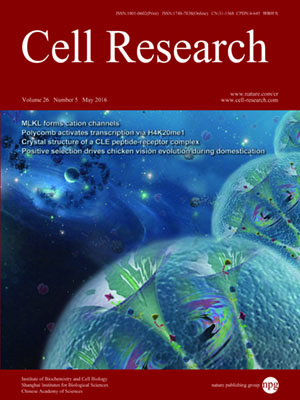
Volume 26, No 5, May 2016
ISSN: 1001-0602
EISSN: 1748-7838 2018
impact factor 17.848*
(Clarivate Analytics, 2019)
Volume 26 Issue 5, May 2016: 574-592
ORIGINAL ARTICLES
Towards a structural understanding of allosteric drugs at the human calcium-sensing receptor
Katie Leach1, Karen J Gregory1, Irina Kufareva2, Elham Khajehali1, Anna E Cook1, Ruben Abagyan2, Arthur D Conigrave3, Patrick M Sexton1 and Arthur Christopoulos1
1Drug Discovery Biology, Department of Pharmacology, Monash Institute of Pharmaceutical Sciences, Monash University, 381 Royal Parade, Parkville, VIC 3052, Australia
2Skaggs School of Pharmacy and Pharmaceutical Sciences, University of California, San Diego, 9500 Gilman Drive, La Jolla, CA 92037, USA
3School of Molecular Bioscience, Charles Perkins Centre, University of Sydney, NSW 2006, Australia
Correspondence: Katie Leach, E-mail: katie.leach@monash.edu; Arthur Christopoulos,(arthur.christopoulos@monash.edu)
Drugs that allosterically target the human calcium-sensing receptor (CaSR) have substantial therapeutic potential, but are currently limited. Given the absence of high-resolution structures of the CaSR, we combined mutagenesis with a novel analytical approach and molecular modeling to develop an “enriched” picture of structure-function requirements for interaction between Ca2+o and allosteric modulators within the CaSR's 7 transmembrane (7TM) domain. An extended cavity that accommodates multiple binding sites for structurally diverse ligands was identified. Phenylalkylamines bind to a site that overlaps with a putative Ca2+o-binding site and extends towards an extracellular vestibule. In contrast, the structurally and pharmacologically distinct AC-265347 binds deeper within the 7TM domains. Furthermore, distinct amino acid networks were found to mediate cooperativity by different modulators. These findings may facilitate the rational design of allosteric modulators with distinct and potentially pathway-biased pharmacological effects.
10.1038/cr.2016.36
FULL TEXT | PDF
Browse 2120


